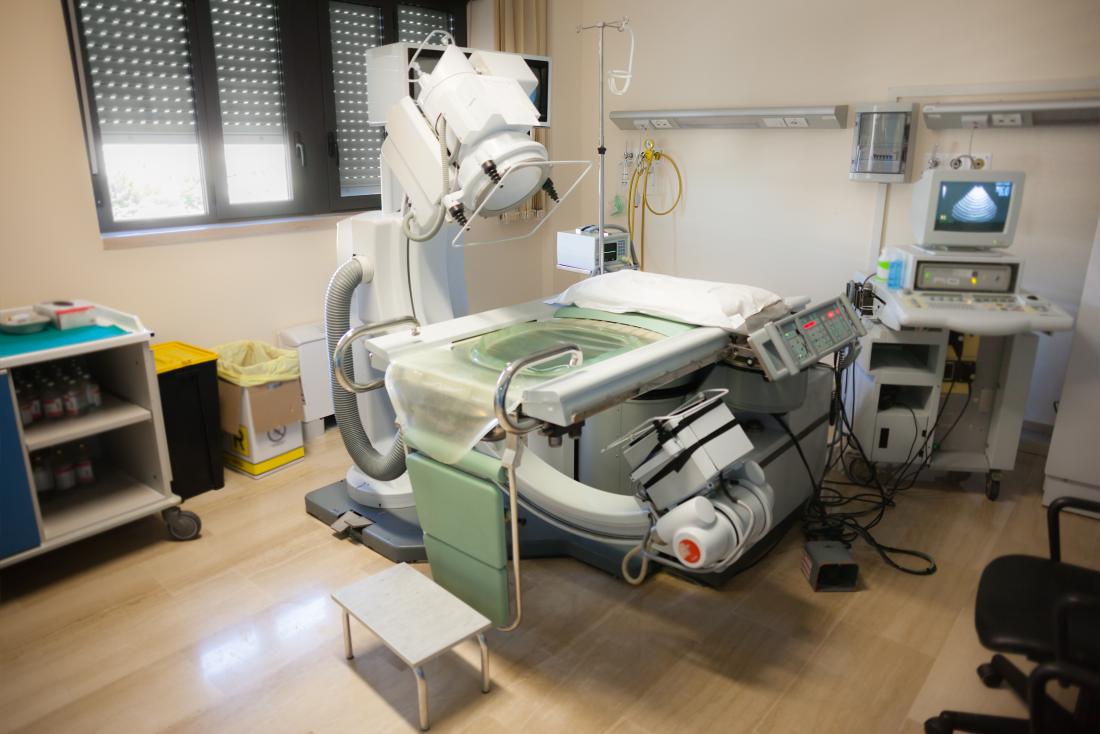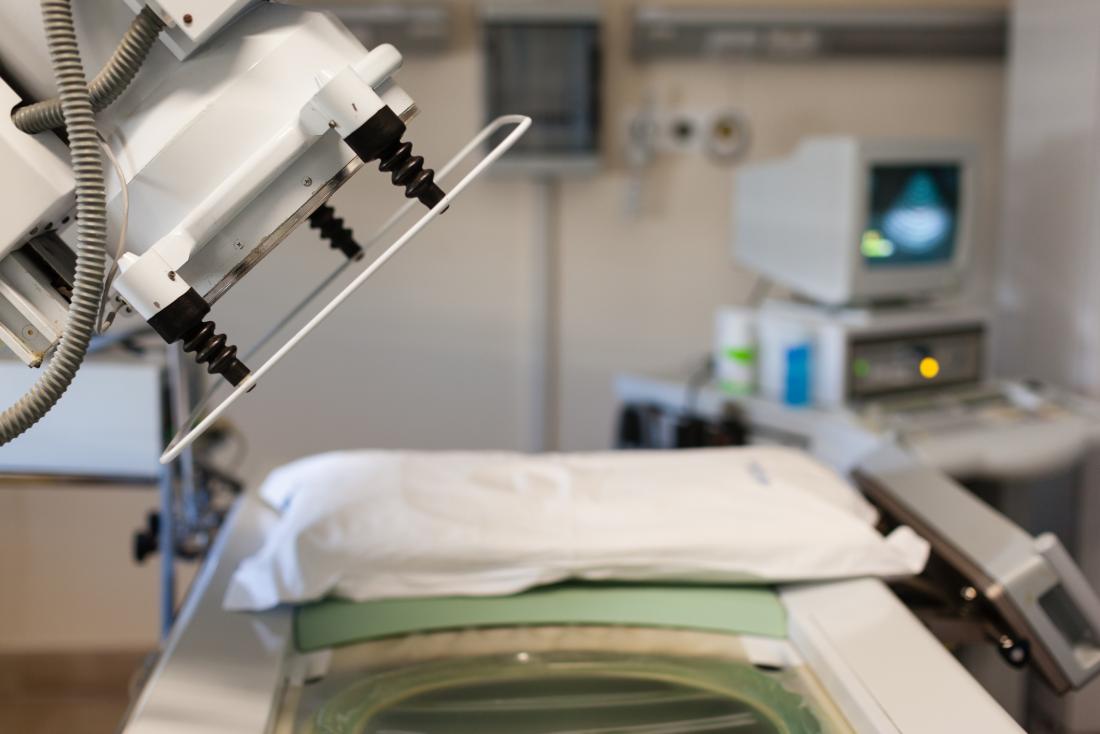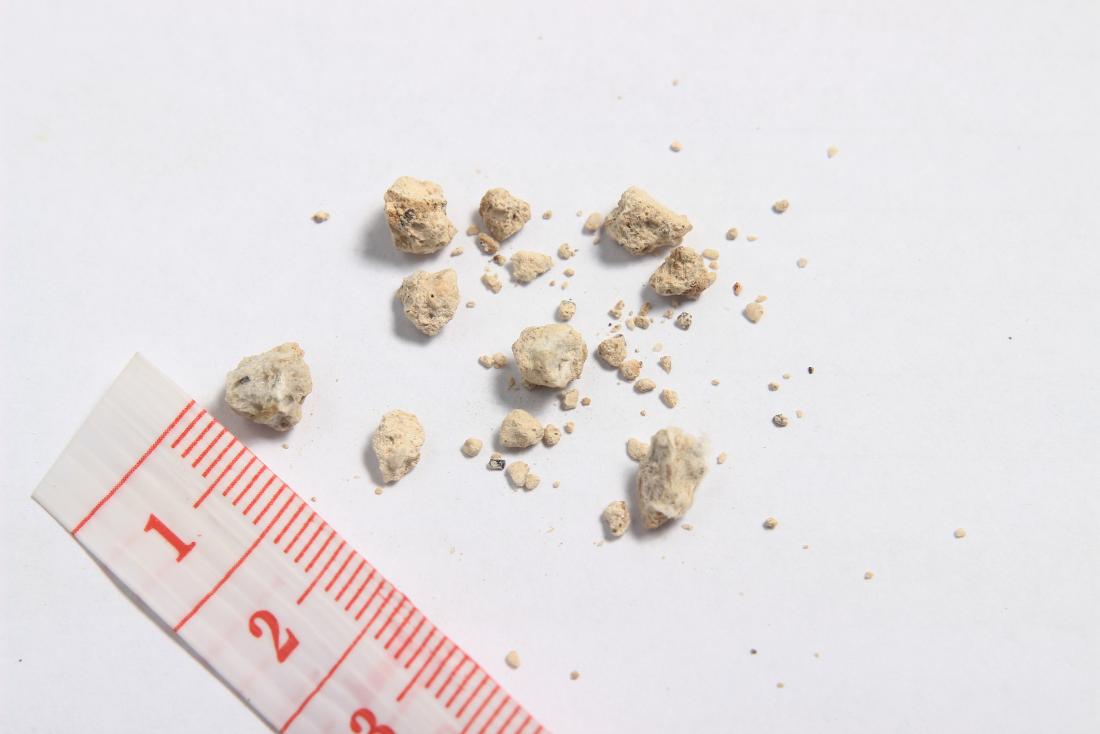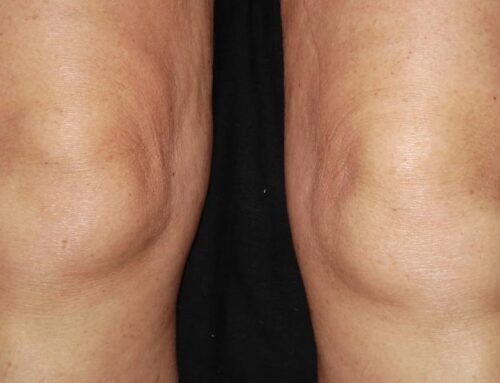The remaining particles of small stone will exit the body when a person urinates.
In this article, learn more about how the procedure works, the success rate, and how to prepare.
What is lithotripsy?

It is common to develop stones in the kidneys, gallbladder, or ureter. Sometimes stones are small enough to leave the body during urination without a person noticing. Large stones, however, can cause pain and block the flow of urine.
If stones do not pass, they can damage the kidneys and urinary tract. When medications do not help, a lithotripsy procedure can break the stones down into small pieces so they can pass out in the urine.
The two types of lithotripsy are extracorporeal shock wave lithotripsy (ESWL) and laser lithotripsy.
Laser lithotripsy is sometimes abbreviated as FURSL (flexible ureteroscopy and laser lithotripsy) because doctors use a tool called a ureteroscope.
Both procedures can help eliminate bothersome stones quickly and effectively. The type of treatment a doctor recommends will depend on a range of factors, such as the type of stones and the individual’s overall health.
ESWL
ESWL uses shock waves to break down stones. During this procedure, a surgeon will use a machine called a lithotripter to aim sound waves directly at the stones through the body.
The sound waves break down the stones into small pieces. The waves only affect stones and will not harm muscle, bone, or skin.
The procedure takes about 1 hour and usually takes place in a hospital. In most cases, a person can go home the same day.
After the treatment, a person should pass the stone particles over several days or weeks through urination.
FURSL
This procedure involves using an endoscope to treat stones in the ureter. An endoscope is a flexible tube with a light and camera that helps a doctor see inside an organ or body cavity.
The doctor can see the stones using the endoscope and uses a laser to break them down. The procedure takes about 30 minutes, and most people can go home the same day.
The broken stone fragments should pass easily through urine in the days and weeks following the procedure.
Success rates
According to one study in the Oman Medical Journal, the success rate of lithotripsy is 74 percent for kidney stones and 88 percent stones in the ureter.
The researchers defined the successful treatment of ureteral stones as being stone-free; they considered successful kidney stone treatment as having insignificant fragments of kidney stones of less than 4 millimeters left in the kidney.
In the same study, complications occurred in around 38.5 percent of people with kidney stones and 39.4 percent of people with ureteric stones. Pain in the loins was the most common complication.
Only 0.5 percent of people with kidney stones experienced a urinary tract infection after the procedure.
Another systematic review found that FURSL had a success rate of 93.7 percent for stones around 2.5 cm in size. The study reported that 10.1 percent of people experienced some complications.
How to prepare

Before the lithotripsy, a doctor will do tests to determine the number of stones, as well as their size and location.
Doctors will inject a dye into a vein before doing a particular type of X-ray called an intravenous pyelogram (IVP) that helps locate the stones.
This dye travels through the bloodstream to the kidneys, ureter, and bladder and highlights the stones, which the doctor can see as dark spots on an X-ray.
People should let their doctors know if they are taking any medications. They may need to stop taking certain medications, such as blood thinners and over-the-counter painkillers, such as aspirin and ibuprofen, which can interfere with the ability of the blood to clot.
Blood clotting is essential to stop any bleeding that might occur during the procedure.
If possible, it is also a good idea to stop smoking several days before the procedure to prevent blood-clotting issues.
Lithotripsy usually takes place under general anesthesia, which means a person will be asleep and will not feel any pain. Typically, people will need to fast for 8 to 12 hours before receiving anesthesia.
Anyone undergoing lithotripsy should also plan to have someone drive them home, as anesthesia can cause drowsiness and nausea for several hours after the procedure.
What to expect
Once in the procedure room, a doctor will place an intravenous (IV) line in a person’s arm to administer anesthesia and provide pain medication.
For ESWL, the person will lie on the table with the lithotripter positioned to target the location of the stones.
A doctor will pass a water-filled cushion between the body and lithotripter to conduct the shockwaves properly.
The shock waves are not painful. A doctor may also place a stent in the ureter to help the broken stones pass.
For FURSL, a doctor will insert a ureteroscope into the bladder and up into the ureter and kidney if necessary. They will use a laser to break down any stones they see.
Recovery

After lithotripsy, it may take a few weeks to pass the stones.
After awakening from the anesthetic, a person will be monitored for at least 1 hour to confirm they are comfortable and stable enough to go home. A doctor will provide care instructions and pain medications before discharging them.
It may take a few weeks to pass all the stone fragments, and it is not unusual to see blood in the urine for the first few days after the procedure.
It is common to experience pain in the back and flank, but pain medications can reduce the severity.
Some people may also experience mild bruising on the skin where the shock waves entered the body.
Most people can return to work 1 or 2 days after ESWL. They will usually have a follow-up appointment with the doctor several weeks later.
It may be over a week before a person feels able to return to work following a ureteroscopic procedure, however, and full recovery may take even longer.
Risks and side effects
People often experience bruising and soreness after lithotripsy. A fever or chill may indicate an infection, so a person should speak to a doctor.
Heavy bleeding after lithotripsy is uncommon.
If stone fragments get stuck, there may be a blockage in the ureter. If this is the case, a doctor may perform an additional procedure with a ureteroscope to remove the fragments.
Prolonged pain may also indicate a blockage. If a person does not get relief with pain medication or has severe pain, they should see a doctor.
Limitations
Lithotripsy procedures cannot treat large stones or hard stones. ESWL may not benefit a person with obesity, as the shock waves may not be able to reach the stones.
Doctors do not recommend lithotripsy procedures for pregnant women as they may pose a risk to the developing fetus.
Some stones will require more than one procedure and, in some cases, a doctor may need to place a stent and remove it once the stone fragments have passed.



